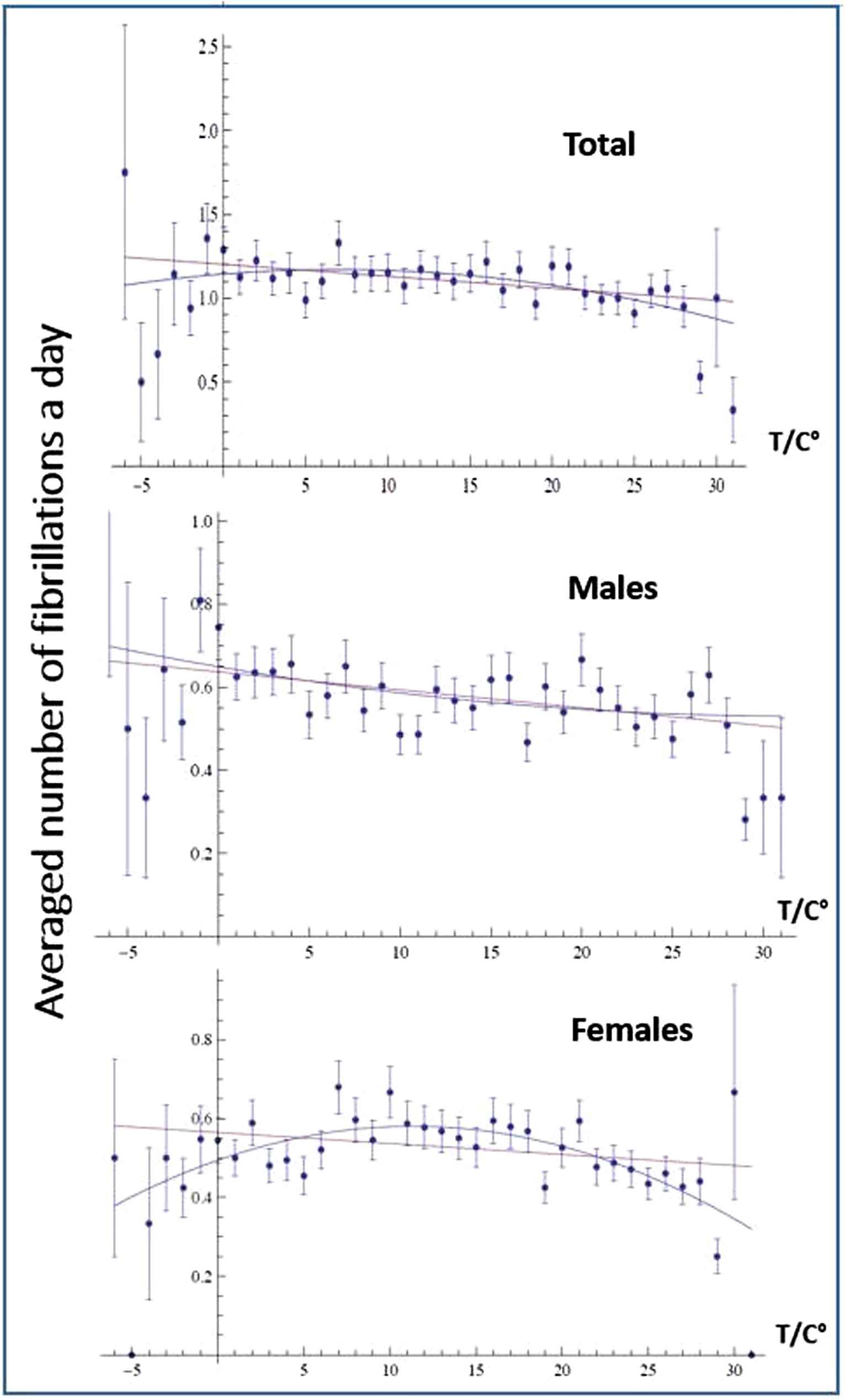Incidence of acute-onset atrial fibrillation correlates with air temperature. Results of a nine-year survey
- DOI
- 10.1016/j.jegh.2014.10.003How to use a DOI?
- Copyright
- © 2014 Ministry of Health, Saudi Arabia. Published by Elsevier Ltd.
- Open Access
- This is an open access article under the CC BY-NC-ND license (http://creativecommons.org/licenses/by-nc-nd/4.0/).
Dear Editor,
We are thankful to Turin et al. for the interesting observations raised on our previous article [1]. The authors suggest that a graphical presentation of data using a U-shaped non-linear association is a “very pragmatic possibility”. We have hence taken into account the suggestion of a potential better performance exhibited by linear analysis, and we applied a non-linear fitting model of quadratic form (U-shaped), where:
Mean daily number of AAF = #2 T2 + #1 T + #0 with T representing the temperature in Celsius and #2;#1;#0 representing the fitted coefficients by our non-linear fitted procedure.
Then, we compared the P-value for the linear versus the non-linear fitting. Finally, to have a direct graphical representation of our findings, we show, as suggested by Turin et al., the correct data fitting figures (always with linear versus non-linear association). For analysis of total data (males and females), we found that the linear fitting yielded a better result (i.e., P = 0.001 for linear analysis and P = 0.043 for quadratic analysis, respectively).
For analysis of male data, we also found that the linear fitting was better performing (i.e., P = 0.007 for linear analysis and P = 0.55 for quadratic analysis, respectively). As regards the females, we obtained a good fitting from the non-linear model, as suggested by Turin et al. The improved fitting formula was: Mean daily number of AAF = (−6.7 10−4 ± 1.8 10−4) T2 + (0.015 ± 0.005) T + (0.49 ± 0.03) (P = 0.06 for linear analysis and P = 0.003 for quadratic analysis, respectively).
In conclusion, the statistical significance of these associations was improved in females using a non-linear (quadratic) fitting model, whereas the analysis of the entire study population and males remained better fitted by our previous linear model. Since the extreme values of temperature are somehow specific to the climate of our region and are hence inherently included in the data set, we believe that there is no reason for elimination. Moreover, these extreme values are very few, so that their effect on the fitting is supposed to be extremely modest (see Fig. 1).

Linear and non-linear correlations between mean daily temperature and episodes of AAF. Red lines represent linear correlations, and blue lines represent non-linear (quadratic) correlations.
Conflict of interest
None declared.
Cite this article
TY - JOUR AU - Ivan Comelli AU - Gianfranco Cervellin AU - Jayme Ferro AU - Denis Comelli AU - Elisabetta Sartori AU - Giuseppe Lippi PY - 2014 DA - 2014/11/14 TI - Incidence of acute-onset atrial fibrillation correlates with air temperature. Results of a nine-year survey JO - Journal of Epidemiology and Global Health SP - 95 EP - 97 VL - 5 IS - 1 SN - 2210-6014 UR - https://doi.org/10.1016/j.jegh.2014.10.003 DO - 10.1016/j.jegh.2014.10.003 ID - Comelli2014 ER -
